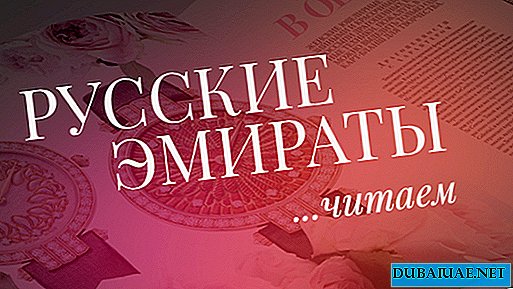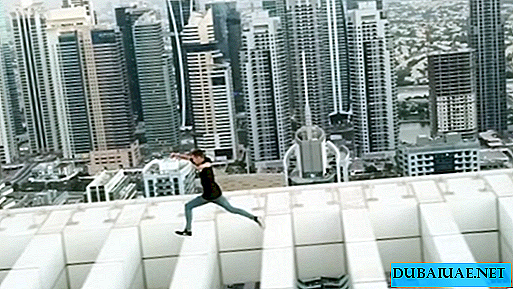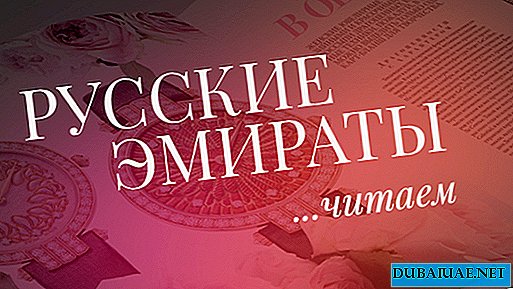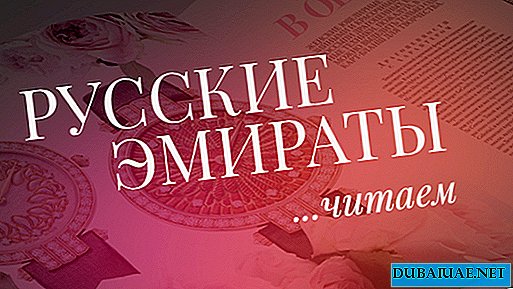 Text: Natalia Remmer
Text: Natalia Remmer EQUESTRIAN SPORTS IN THE UAE - NOT JUST ELITE ELECTION OF THE REPRESENTATIVES OF THE ROYAL SURNAME. RACES ON THE COAST OF ARABIA - ONE OF THE CULT OF SYMBOLS OF THE COUNTRY ESTABLISHED IN THE RANK OF THE NATIONAL IDEA.
Endurance racing
Dubai International Endurance City, or the "International Equestrian City of Dubai", is the beloved brainchild of the ruler of the most beautiful emirate. The development of the territory in the Saih Al Salam area began in the late 80s, and in 1993 the Emirate Equestrian Federation was created and the first endurance races took place with the participation of horses and camels. That month of January, the horses that conquered 40 km of sand dunes took 15 first places, ahead of the proud "kings of the desert."
Today on the territory of the "equestrian town" there are 22 riding clubs owned by ruling families and private owners. Here also runs the endurance race track, in the cool season - from November to March - hosting numerous competitions at distances from 40 to 240 km. One of the most prestigious winter tournaments is the Sheikh Mohammed bin Rashid Al Maktoum Cup for covering a distance of 160 km. The first 20 riders receive off-road vehicles as a gift, and the horses (or rather, their owners) who complete the distance receive a cash prize of US $ 25 thousand. It is considered a spectacular show, in particular, because representatives of the royal family often take part in it, including His Highness Sheikh Hamdan bin Muhammad bin Rashid Al Maktoum, the Crown Prince and the main athlete of Dubai. By the way, Sheikh Hamdan is the current world champion in endurance racing: in August 2014, he became the winner of the World Equestrian Games in Normandy, in which 170 riders from 48 countries took part.
The race begins at sunrise with a rather prosaic start - no shot of a pistol, no whistle, no bugle. As a rule, the surest sign of the imminent start of the race is the appearance on the launch pad of a white Gelendvagen under the number "1 DUBAI" (pictured): the ruler of Dubai patronizes endurance races and is present in almost all of them personally.
The race involves more than 200 riders from the Persian Gulf and Europe: they go to the start by teams representing their sports clubs. Each circle of the course is 40 km, its passage takes about 90 minutes. After that - a short break and veterinary control with a pulse measurement in the horse. After that, the co-mission decides whether to let the rider into the second round. The first race is still not so painful: although the horses and riders have been standing since late at night, there is still strength and the sun is not so strong yet. The average speed is 26-28km / h, that is, at an even galloping pace. The rider sometimes stands in stirrups to make the ride easier and constantly pours cool water from head to tail on it to prevent the body from overheating. Therefore, after the race, the track is always densely strewn with empty plastic bottles.
In endurance races, not only the preparation and health of the horse itself, but also the technique of working with the rider is of decisive importance. Everyone acts in the individual standings. The most correct tactic is to go at even speed, to save strength in order to break ahead in the last round. By the way, this is exactly what, judging by the results of covering the entire distance, this year the crown prince of Dubai, who won the cup, did the same.
 Endurance races are especially valued in the UAE, as they are mainly horses of the Arabian breed. “Arabian horses were created for racing in the desert, because they were born in a hot climate, resistant to stress, and large nostrils and lungs help them better absorb oxygen,” says Aliya Al Mazruki, a participant in numerous equestrian competitions who set several world records. “The horses begin to train at the age of three to four years, gradually increasing the speed from a step to a gallop, and at the age of five they are qualified to participate in large competitions - from 40 km. As a rule, preparation for the next sports season ONU, which starts in late autumn begins in the hottest time -. In July-August, and if 5 out of 25 horses on its results are suitable for competitions, this is a very good indicator for the UAE. "
Endurance races are especially valued in the UAE, as they are mainly horses of the Arabian breed. “Arabian horses were created for racing in the desert, because they were born in a hot climate, resistant to stress, and large nostrils and lungs help them better absorb oxygen,” says Aliya Al Mazruki, a participant in numerous equestrian competitions who set several world records. “The horses begin to train at the age of three to four years, gradually increasing the speed from a step to a gallop, and at the age of five they are qualified to participate in large competitions - from 40 km. As a rule, preparation for the next sports season ONU, which starts in late autumn begins in the hottest time -. In July-August, and if 5 out of 25 horses on its results are suitable for competitions, this is a very good indicator for the UAE. "
Speaking about the development of equestrian sports in the UAE, His Highness Sheikh Mohammed bin Rashid Al Maktoum, Prime Minister, Vice President of the UAE and ruler of Dubai, said: “Love for the horse is in my blood. Do not forget that horses were bred throughout centuries of Arab tribes in our lands for hunting and fighting, and they symbolize our history. Riding is more than just sitting on the back of a horse, it is nobility and chivalrous behavior. "
To the barrier!
The equestrian center of Dubai is the Dubai Equestrian Center sports center, home to the arena that has hosted show jumping championships in recent years. Traditionally, Europeans play strongly in this sport, Emirates and Qatari themselves go to the cups in the UAE, but this year the gallery of fame will also be replenished with a photograph of our compatriot.
Vladimir Tuganov is a true legend of jumping, a participant in two Olympic Games and vice president of the Equestrian Federation of Russia. The only Russian at the Dubai Show Jumping Championship, in which he participated for the first time, performed brilliantly: he not only won the Emirates Airline Grand Prix, but also became the best rider of the tournament.
By the way, in the current tournament, some spectators saw a political subtext. Three athletes, including the “gas king” Oleksandr Onishchenko, a native of the Rostov region, entered the arena under the Ukrainian flag and coped with the main program pretty well. Jumping failed. Horse Oleksandr Onishchenko in the very finals of the competition made a mistake - touched his rear hooves and dropped an obstacle. “Ukraine shot down,” one of the fans reported to someone over the phone. The victory of Vladimir Tuganov, who conquered the audience with his radiant smile, was clean and impeccable. “Equestrian sport is developing in Russia. You see how the Russians are performing,” Vladimir Tuganov joked in an interview with “Russian Emirates.” “I came for the first time last year, I liked it, and brought the main team this season. I took second place tournament in Sharjah, and in Dubai - you yourself saw. "
The victory was brought to the Russian horseman by the 9-year-old Hanoverian mare Sinfony 168, who already had many successful performances. She is even called one of the most famous horses in the world of show jumping. “To win international tournaments, you need very expensive and capable horses. Their cost is estimated at 2-3 million euros. The breed is not decisive, but I mainly ride German horses,” Vladimir Tuganov explained.
Ahead of the record holder are first-class tournaments in Doha, Antwerp, Monte Carlo and Hamburg. We live in a difficult time, so we just want to wish our athlete new successes and once again recall that sport is still the world!
Behind the Scenes of Maidan
This year is truly special for the entire equestrian world of Dubai, because the most expensive in the history of flat racing, the Dubai World Cup celebrates its 20th anniversary. Especially for the solemn date, the exhibition devoted to the history of horse racing and race breed is held within the walls of the Maidan Hippodrome, which annually hosts prestigious competitions.
Visitors will certainly be curious to know that the history of the thoroughbred breed dates back to the late XVII - early XVIII centuries, when the stallions Darley Arabian, Godolfin Arabian and Beyrle Turok were brought from England to the East, whose origin is still debated. However, scientists agree that it was Arab blood that flowed in the veins of the ancestors of the race breed. Only 300 years later, their descendants managed to get perfection - the English purebred breed, whose representatives are fighting today for the main prize of the Dubai Cup.
An important milestone in the history of equestrian sport in Dubai was 1967, when His Highness Sheikh Mohammed bin Rashid Al Maktoum, Prime Minister, Vice President of the UAE and ruler of Dubai, together with his brother and now Minister of Finance of the UAE Sheikh Hamdan bin Rashid Al Maktoum Hippodrome, where the races of "2000 Guineas" took place: this stage was called "The Birth of Passion Lifelong." After 10 years, Hutt 1 horse, owned by Sheikh Mohammed, brought the first victory in the Brighton tournament, launching Dubai's winning march in world equestrian sport.
If the history of the World Cup in horse racing is happening before everyone's eyes, then only a select few are dedicated to the details of the hard work in preparing it. That is why it is very curious to look behind the scenes of Meydan to see firsthand how much work and strength is required to prepare future champions - horses, coaches and riders.
So, the sports day at the Maidan stables begins at 3.30 in the morning, when the grooms wake up. Even before the dawn of the horses, and there are about a thousand of them at the stables of the hippodrome, they are taken out to a daily training session, which, along with the road to the hippodrome and back, takes 2-3 hours. During this time, both horses and riders have time to thoroughly warm up. After returning - water treatments and a delicious breakfast. Horses in the royal stables feed on an individual diet: in addition to traditional hay, they eat up to 10 kg per day of a delicious mixture of oats, compound feed and corn oil, where honey and date syrup are sometimes mixed as an encouragement. The horses are not bored. After breakfast, some of them go on a treadmill to keep fit, or to the pool. By the way, in the pool, 500-kilogram horses really swim, but do not go along the bottom - the depth is about 3 m.
Of course, preparation of jockeys for competitions deserves special attention. Getting into their locker room, you begin to feel like Alice in a rabbit hole. The average weight of the rider is 55-58 kg (despite the fact that athletes lighter than 75 kg are not allowed to endurance races), his boots and a saddle, on which he does not even sit down during the races, seem to weigh no more than 100 grams. The equipment is tiny, like the uniforms of officers of the XVIII century, and is amazing. Otherwise, everything is standard: saunas, a gym, a restaurant and a cozy relaxation room. By the way, there is a locker room for jockeys at the Maidan Hippodrome - however, for 20 years it has never been used.
The Dubai Racing World Cup is a true tote for horse owners. After winning it, the cost of a horse, especially suitable for production, can take off tens of times and amount to several million dollars. However, even despite this temptation, such horses are sold quite rarely.







